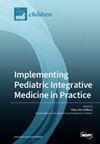摘要
背景:自1985年以来,重组生长激素(rhGH)一直被用于治疗生长激素(GH)引起的身材矮小,通常伴有短暂的不良反应。然而,1999年首次报道了以皮下脂肪不可逆性损伤为特征的脂肪变性,并与抗体形成有关。2021年,14.5%每日接受rhGH治疗的患者出现局部脂肪萎缩,在相同部位重复注射是常见的诱因。长效 rhGH(LAGH)制剂具有每周注射一次的优点,可提高患者的舒适度和治疗依从性:本病例报告讨论了一名妊娠40周出生的5.5岁女孩,出生体重2300克,被诊断为特发性矮身材和GH分泌边缘化,并有轻度宫内生长迟缓病史:在开始接受由家人按每周 0.66 毫克/千克体重的标准剂量注射 LAGH 的非雌二醇融合蛋白制剂 somatrogon 治疗后,她在 11 周内注射部位出现了局部脂肪萎缩。注射始终在右上臂的同一部位进行,该部位出现了脂肪萎缩。出现这种不良反应后,她的治疗调整为每天注射一次 RhGH,并严格要求她轮换注射部位。尽管有这些明确的指示,但随访结果显示,患者父母继续使用非雌二醇化的LAGH融合蛋白制剂进行注射,这次注射的部位是左上臂,导致患者在八周内再次出现脂肪变性:结论:此次复发强调了正确注射技术的重要性,尤其是注射部位的轮换,以防止局部不良反应的发生。鉴于本病例的局限性,家长没有按照建议进行调整,因此必须强调,一旦出现脂肪萎缩等副作用,应立即停止使用该制剂。个体对药物的反应总是有可能发生的,这就强调了临床医生在使用 LAGH 治疗期间需要保持警惕,及时监测和处理不良反应。Background: Recombinant growth hormone (rhGH) has been used since 1985 to treat growth hormone (GH)-induced short stature, typically associated with transient adverse events. However, lipoatrophy, characterized by irreversible damage to subcutaneous fat, was first reported in 1999 and linked to antibody formation. In 2021, localized lipoatrophy was observed in 14.5% of patients receiving daily rhGH, with repeated injections at the same sites being a common contributing factor. Long-acting rhGH (LAGH) preparation offers the advantage of weekly injections, enhancing patient comfort and adherence to treatment.
Methods: This case report discusses a 5.5-year-old girl born at 40 weeks of gestation with a birth weight of 2300 g, diagnosed with idiopathic short stature and borderline GH secretion, along with a history of mild intrauterine growth retardation.
Results: After initiating treatment with somatrogon, a non-pegylated fusion protein formulation of LAGH at the standard dose of 0.66 mg/kg body weight weekly, administered by her family, she developed localized lipoatrophy at the injection site within eleven weeks. The injections were performed consistently in the same area of the right upper arm, where lipoatrophy emerged. Following the onset of this adverse effect, her treatment was adjusted to daily rhGH, with strict instructions to rotate injection sites. Despite these clear instructions, follow-up revealed that the parents continued to administer injections with the non-pegylated LAGH fusion protein formulation, this time in the left upper arm, leading to a recurrence of lipoatrophy within eight weeks.
Conclusions: The recurrence underscores the importance of proper injection techniques, particularly site rotation, in preventing localized adverse effects. Given the limitations of this case, where the recommended adjustments were not followed by the parents, it is crucial to emphasize that the administration of the preparation should be discontinued immediately upon the appearance of side effects such as lipoatrophy. Individual reactions to drugs are always possible, and this highlights the need for clinician vigilance in monitoring and addressing adverse effects promptly during treatments with LAGH.

 求助内容:
求助内容: 应助结果提醒方式:
应助结果提醒方式:


